Environmental DNA, or eDNA, is a molecular sampling technology that collects information about organisms using DNA shed by them into their environment. While eDNA holds exciting potential to become an efficient, low-cost, non-invasive ecological monitoring method, a lack of standardization of approaches and purpose-built sampling equipment make it hard to compare results and determine its actual effectiveness across studies. Detection success and accuracy also vary greatly among species and environments, making standardization a challenge.
However, as eDNA moves toward becoming an industry standard method for species detection and management, the equipment is beginning to transition from largely do-it-yourself experimental contraptions to professionally engineered tools. For example, Smith-Root Inc. recently developed the first-ever purpose-built eDNA sampling system, which they call ANDe™. We’re also seeing an expansion of eDNA applications from mainly marine to freshwater and even terrestrial environments, although the latter still requires substantial growth.
As this nascent field develops, it is critical for the conservation tech community to explore and identify how eDNA applies to management needs, and to ensure that continued development meets those needs. Beyond indicating species presence, research so far suggests that eDNA can contribute to conservation by deepening understanding of population dynamics, resource usage, disease presence, invasion pathways of non-native species, and population genetics, to name a few. This indicates that it could be a critical tool for managing imperiled and invasive species.
If you're new to eDNA and genomics, check out our Tech Tutors episode "How Do I Use Portable Genomics in the Field?" featuring Ineke Knot. You'll also find a bank of resources on that page, including a handy glossary of terms in our collaborative notes document!
Does your work involve eDNA and genomics, or are you curious about incorporating this type of technology into your field or lab work? Start a discussion in our group forum!
Header Image: Benjamin Barca
No showcases have been added to this group yet.
WILDLABS & Wildlife Conservation Society (WCS)
I'm the Bioacoustics Research Analyst at WILDLABS. I'm a marine biologist with particular interest in the acoustics behavior of cetaceans. I'm also a backend web developer, hoping to use technology to improve wildlife conservation efforts.





- 41 Resources
- 38 Discussions
- 33 Groups
- @YvanSG
- | he/him
Clemson University
Seabird ecologist at Clemson University, South Carolina Cooperative Fish and Wildlife Research Unit. Co-chair of Caribbean Seabird Working Group. Porteur de béret occasionel.



- 0 Resources
- 62 Discussions
- 7 Groups
- @BAMBII24
- | She/HER
A public health professional and sustainability strategist focused on genetic based nutrition and biodiversity conservation in Africa.
- 0 Resources
- 0 Discussions
- 3 Groups
- @TaliaSpeaker
- | She/her
WILDLABS & World Wide Fund for Nature/ World Wildlife Fund (WWF)
I'm the Executive Manager of WILDLABS at WWF



- 23 Resources
- 64 Discussions
- 31 Groups
I am a Wildlife Biology and Environmental conservation expert with over eight (8) years of experience working with research institutions and community-based natural resources management non-governmental organizations with a focus on supporting research and community development's
- 0 Resources
- 0 Discussions
- 1 Groups
- 0 Resources
- 0 Discussions
- 2 Groups
Herpetologist and molecular ecologist @ Kennesaw State University
- 0 Resources
- 0 Discussions
- 1 Groups
University of Rizal System
I study fish, their parasites, and freshwater ecosystems to support conservation and sustainability.



- 0 Resources
- 11 Discussions
- 3 Groups
MSc student in wildlife management and conservation


- 0 Resources
- 2 Discussions
- 12 Groups
- @ahmedjunaid
- | He/His
Zoologist, Ecologist, Herpetologist, Conservation Biologist





- 74 Resources
- 7 Discussions
- 25 Groups
- @Kirsty
- | She/Her
Manchester Metropolitan University
I am a molecular biologist developing portable tools for genetic analysis in the field
- 0 Resources
- 0 Discussions
- 5 Groups
- @ttiagopinto
- | He/Him
Aspiring to learn more
- 0 Resources
- 0 Discussions
- 6 Groups
Welcome to an installment of a new series from the Wildlife Crime Tech Challenge in which we will be sharing updates from their 16 Prize Winners who are working to combat wildlife crime around the globe. Slow lorises...
23 June 2017
Are you ready for this year's #Tech4Wildlife Photo Challenge? In anticipation, we're counting down our ten favourite entries from last year. Do you think you can top these?
1 March 2017
The Conservation Leadership Programme (CLP) is a training and capacity building programme that targets individuals from developing countries who are early in their conservation career and demonstrate leadership...
21 November 2016
In 2014, when Mariah Pfleger volunteered to sift through water samples from Alabama’s Mobile River Basin, she wasn’t expecting to solve one of biology’s most frustrating missing fishes cases.
18 November 2016
Technology by itself will not save pangolins or elephants, but it can help make major progress.
14 November 2016
Do you work on conserving Neotropical migratory birds? Do you need funding? Why not apply for a grant from the U.S. Fish and Wildlife Service through the Neotropical Migratory Bird Conservation Act's grant program? The...
8 November 2016
From artificial “sniffer” technologies to portable DNA sequencers, the Wildlife Crime Tech Challenge received hundreds of innovative ideas to help stamp out wildlife crime. Now, the Challenge is proud to announce 16...
22 January 2016
David Gruber, a National Geographic Emerging Explorer, is a marine biologist working to develop fluorescent proteins into modulatable probes with neurobiological and medical applications. In his talk for the WWF Fuller...
24 December 2015
Dr. Claude Miaud, Professor at the Ecole Pratique des Hautes Etudes, is a pioneer of eDNA research. He describes how a species’ DNA can be detected in the environment in which that species is found. This monitoring...
24 December 2015
Article
Environmental DNA (eDNA) is nuclear or mitochondrial DNA that is released from an organism into the environment. Sources of eDNA include secreted faeces, mucous, gametes, shed skin, hair and carcasses. In this article,...
2 November 2015
March 2025
event
February 2025
event
June 2024
April 2024
6 Products
Recently updated products
| Description | Activity | Replies | Groups | Updated |
|---|---|---|---|---|
| Carly, that would be great! Thanks! I work with soundscapes and love the work of Rainforest Connection! I'll send you an email (@CUNY) to coordinate! |
|
Acoustics, AI for Conservation, Conservation Tech Training and Education, Drones, eDNA & Genomics, Emerging Tech, Geospatial | 2 years 2 months ago | |
| Thanks so much!! |
|
Acoustics, AI for Conservation, Animal Movement, Camera Traps, Community Base, Data management and processing tools, Drones, eDNA & Genomics, Emerging Tech, Open Source Solutions, Geospatial, Software Development | 2 years 10 months ago | |
| It is! Here you go: |
|
eDNA & Genomics | 3 years ago | |
| @gracieermi & I are happy to announce the latest update to the Conservation Tech Directory, bringing our total resources in the... |
|
Acoustics, AI for Conservation, Animal Movement, Camera Traps, Community Base, Data management and processing tools, Drones, eDNA & Genomics, Geospatial, Software Development | 3 years 1 month ago | |
| Some folks doing work in this space - Wildlife Drones, Conservation Drones, UAV Wild, AfricanDrones, Oceans Unmanned, Geonadir. |
|
Drones, AI for Conservation, Citizen Science, eDNA & Genomics, Emerging Tech | 3 years 1 month ago | |
| New paper by Héloïse Verdier of LEHNA lab: Passive sampling of environmental DNA in aquatic environments using 3D-printed hydroxyapatite samplers https://onlinelibrary.wiley.com/... |
|
eDNA & Genomics | 3 years 2 months ago | |
| Posting for a labmate. La encuesta está en inglés, pero se ha proporcionado una traducción en español (ver... |
|
eDNA & Genomics | 4 years 3 months ago | |
| The IUCN Otter Specialist Group is hosting a Virtual Eurasian Otter Workshop on 26-28.February.2021. There will be invited talks and... |
|
AI for Conservation, Camera Traps, eDNA & Genomics | 4 years 6 months ago | |
| Hi Wildlabbers, Ineke's episode is up on our Youtube now! Follow this link or watch it below. You can also find our collaborative notes from this episode here (where you... |
|
eDNA & Genomics | 4 years 11 months ago | |
| Ah! Well you're in luck.. We're doing acoustics first thing next year. Late January some time, so in good time for your field season. We also had the audiomoth team give a... |
|
eDNA & Genomics | 5 years 8 months ago | |
| Hi Emily, Rachel has some practical suggestions about rigging your current centrifuge up to fit the small tubes. What do you think - vIable? 1) If you're... |
|
eDNA & Genomics | 7 years 4 months ago | |
| Interesting new article on in-the-field DNA analysis. |
|
eDNA & Genomics | 7 years 10 months ago |
Environmental DNA – An emerging tool in conservation for monitoring past and present biodiversity
PV Nature is recruiting members to its Technical Advisory Committee
5 August 2025 4:03pm
Persistence of Reptile DNA in a Terrestrial Substrate: A Case Study Using the Eastern Indigo Snake
Assistant Project Manager - Ecological Restoration
10 July 2025 7:30pm
WILDLABS AWARD 2025 - Automatization of a Contact-Free Saliva Sampler for Wildlife Conservation
28 May 2025 2:29pm
19 June 2025 6:28pm
I eagerly await further information about the progress of this type of technology and its availability. I am a wildlife veterinarian with experience in handling and capturing wild carnivores, and this type of device would certainly facilitate epidemiological monitoring of elusive and logistically difficult-to-handle wildlife species. Greetings from Chile!
20 June 2025 9:04pm
Hola, Alen! I'm a veterinarian too and this device is being developed thinking of you and your colleagues. We want field veterinarians to be able to collect more samples with less risks (for animals and people). Check us out at @swab_biosampler and linktree swab biosampler. Greetings from Brazil!
New Group Proposal: Systems Builders & PACIM Designers
18 June 2025 2:52pm
19 June 2025 9:08am
Hi Chad,
Thanks for the text. As I read it, PACIMs play a role in something else/bigger, but it doesn't explain what PACIMs are or what they look like. Now I've re-read your original post, I'm thinking, maybe I do understand, but then I feel the concept is too big ( an entire system can be part of a PACIM ? ) to get going within a WildLabs group. And you want to develop 10 PACIMS within a year through this group? Don't get me wrong, I am all for some systems change, but perhaps you're aiming too high.
19 June 2025 12:19pm
Hello again sir - PACIMs really mean 'projects' is the way I see it. Each part of the acronym can be seen as a project (if you have an assignment to do, you have a project really).
As for your query on 10 projects in 'this' group - I should ask for clarification if you mean particularly acoustics or in any group (I see now this is the acoustics thread after I selected all the groups for this post). If you are asking on acoustics, you're right - I am unsure on 10 as I am not too keen on acoustics yet. If you are asking 10 projects as a whole like 10 projects in the funding and finance group - I believe 10 to be a very reasonable number. Our projects we have co-created are for the most part replicable, rapidly deployable, quickly scalable, fundable through blended finance and more.
Thank you again for the feedback.
19 June 2025 1:43pm
Thank you for your reply, Chad
I meant 10 as a whole, indeed. Perhaps you see your post in one group, but since it is tagged for all groups, I assumed you meant 10 in total.
In your first post you explain PACIM stands for "Projects, Assignments, Campaigns, Initiatives, Movements, and Systems", so I understood it as more than just projects. Obviously, many things can be packed into a project or called a project, but then, what does it mean that 'Projects' is part of the list?
Well, if you think 10 projects is doable, then don't let me stop you.
Population genetics with eDNA
30 May 2025 1:46pm
Environmental DNA for Terrestrial Vertebrate Conservation
 Arnaud Lyet
and 4 more
Arnaud Lyet
and 4 more
3 April 2025 2:34am
Nature Tech for Biodiversity Sector Map launched!
1 April 2025 1:41pm
4 April 2025 1:57pm
Using drone or other unmanned vehicle for DNA sampling on fresh elephant dung in a Baï, Congo Rainforest.
29 January 2024 9:44am
30 January 2024 9:01pm
Forgot to mention this wildlife drone group -
18 March 2025 4:00pm
Hi Antoine,
Maybe I am a bit late but stumbled across your post. We have built a system to collect DNA samples from the rainforest with a drone hovering above the canopy, and we lower a probe more than 40 meters down into the canopy. Something similar could be done for your case, and as the drone hovers above, the noise is somewhat reduced. Feel free to reach out if you want to further discuss this!
28 March 2025 9:14am
Hi @skirchgeorg , thanks for the additional info. We discuss again about this with my colleague and we were still hesitating with the drone, as it will still make some noise that will deter elephant away unless we can cover it with a natural sound. And it term of control drone are not the easiest, and some bird will also attack it (already have experience that in similar context). So after discussion we were more thinking about a rover camouflaged in elephant dung or something else, that will be able to bring back a piece of elephant dung for DNA analysis. This rover will only be able to access the dry part of the baï, but it would be easier to control and we could also attach a small rope in case of problems to bring it back to the platform. If you have any ideas to develop this rover, please contact me!
Arctic Community Wildlife Grants Program
7 March 2025 3:59pm
Primer Encuentro de la Comunidad Latinoamericana de WILDLABS // Primeiro Encontro da Comunidade Latino-Americana do WILDLABS
26 February 2025 12:54pm
eDNA sampling kits
17 February 2025 9:02pm
20 February 2025 11:40am
Hi Nabil,
What medium do you want to sample for your eDNA (soil/air/water)?
If its soil then you can simply collect a sample in a bag and freeze.
This is a nice soil collection protocol with a kit list.
Soil eDNA Sample Collection Protocol
Soil eDNA Sample Collection Protocol
Tropical fieldwork funding! Up to $15,000 -Susan Wojcicki Fellowship
10 February 2025 7:01pm
eDNA sampling kits
10 February 2025 3:05pm
The New Way We Listen to Nature: A Tech Revolution in Conservation and Restoration
30 January 2025 7:44pm
Thesis Collaboration
4 January 2025 5:15pm
7 January 2025 12:32pm
Hi Simon,
Did you already contact INBO? Both biologging and citizen science are big themes at INBO. Last year we had a master thesis on camera trapping invasive muntjac. You can send me a private message for more info!
14 January 2025 3:30pm
Hi Simon,
We're a biologging start-up based in Antwerp and are definitely open to collaborate if you're interested. We've got some programs going on with local zoo's. Feel free to send me a DM if you'd like to know more.
15 January 2025 8:30am
Hi Simon,
We (Reneco International Wildlife Consultants) have an ongoing collaboration with a local University (Abu Dhabi, UAE) for developing AI tools (cameratrap/drone images and video analyses) and biomimetic robots applied to conservation (e.g https://www.sciencedirect.com/science/article/pii/S1574954124004813 ). We also have a genetic team working on eDNA. Field experience could be possible, in UAE or Morocco.
Feel free to write me back if you may be interested and would like to know more
A question about nanopore sequencing analysis
20 August 2024 10:00am
25 November 2024 11:18am
Not an expert here, but when I used this a few years back we initially used the guppy process to do real-time base calling as the nanopore was sequencing, but found that we were better off waiting for the sequencing to finish and then reprocessing all the output using the slow and careful option of the guppy base-calling process (which was way to slow to do effective real-time calling).
25 November 2024 2:10pm
Hi Chris Yesson,
Thank you for your response and answer. Yaps, in my experience with Guppy, we need to increase the model to get better results. However, When I used Dorado for basecalling, it was more appropriate with the result than a Guppy. Also, I found a journal about Porechop_ABI that could minimize unclassified barcodes because of the non-read adapters.
This is a journal : Porechop_ABI: discovering unknown adapters in Oxford Nanopore Technology sequencing reads for downstream trimming | Bioinformatics Advances | Oxford Academic
Best Regards,
6 January 2025 9:18pm
Hi Muhammed,
If you want any help with ONT please contact me
Coupling remote sensing and eDNA to monitor environmental impact: A pilot to quantify the environmental benefits of sustainable agriculture in the Brazilian Amazon
2 November 2024 8:52am
Integrating Satellite Data with on-the-ground conservation tech
9 September 2024 4:59pm
20 September 2024 3:12pm
Hi, Seamus—welcome to WILDLABS!
I work on building ground and sea-truthing technologies for satellite remote sensing related to conservation tech. For example, we have used data collected from Smartfins (thermometers on surfboard fins) to validate Landsat TIRS thermal data and other low-cost tech such as mini- and sensing Secchi disks to evaluate satellite ocean color data. I don't work in conservation tech in the strictest sense (more accurate to say coastal water resources/resilience), but of course it's related, so thought I'd chime in.
Sounds like a great position at Planet, and an important pursuit—good luck, and I hope our paths cross!
24 September 2024 6:02pm
Hi Phil,
Thanks for sharing - this is really interesting work!
Seems like a cool integration of ground-based (or ocean-based) data and satellite data, with a community science aspect as well. I look forward to giving this paper a full read.
Thanks,
Seamus
Community Choice Award Winners: 2024 #Tech4Wildlife Photo Challenge
15 August 2024 2:41am
Cast your vote in the #Tech4Wildlife Photo Challenge Community Choice Awards!
12 August 2024 1:46pm
12 August 2024 9:15pm
13 August 2024 11:26am
AI accelerator for nonprofits working in the Climate area
31 July 2024 3:01pm
31 July 2024 6:24pm
Great acomplishment!!!
1 August 2024 1:39pm
Thank you so much! Now everything is in the hands of amazing organizations and companies! But the first results of the Disaster Management cohort are bringing a very optimistic vision! :) I hope for the same in the Climate cohort!
New WILDLABS Funding & Finance group
5 June 2024 3:24pm
5 June 2024 4:14pm
6 June 2024 1:38am
6 June 2024 4:16am
Apply! 2024 Conservation Tech Award
3 June 2024 3:51pm
Computational Entomology Webinar III: Processing liquid samples
22 May 2024 12:40am
Share Your Work in a Conservation Technology Video
17 May 2024 9:06pm











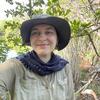

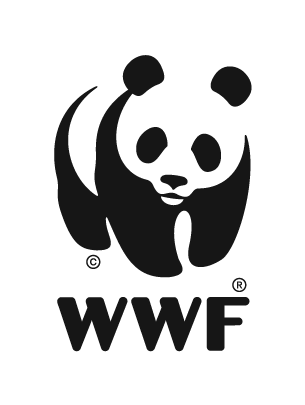
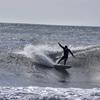


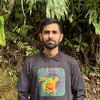



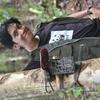


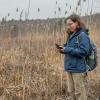








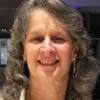












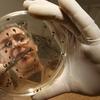
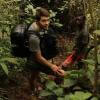












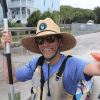









13 June 2025 8:41pm
Amazing! Thank you for sharing!